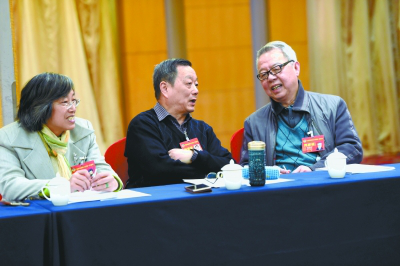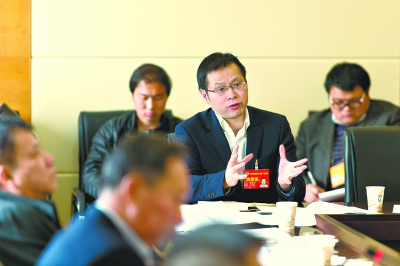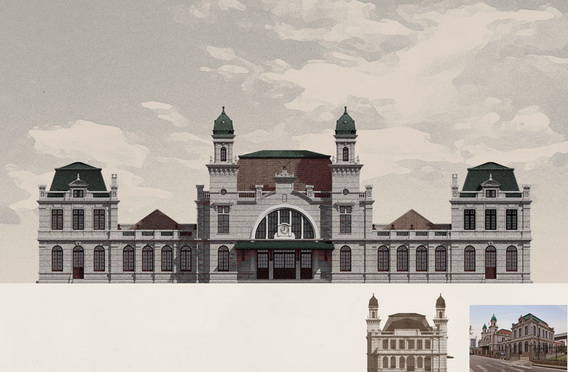Current position: > ENGLISH > COD Application Verification > Part8 >
[8.15]Political Consultative Conference Advise on Wuhan’s City of Design Initiative
Release time:2017-09-10 11:00
|
Political Consultative Conference Advise on Wuhan’s City of Design Initiative: Artistic Creativity Should Be Part of the Yangtze Axis Plan

Yao Weijun (left) and He Zuohuan (right) from Municipal CPPCC Group 20 (Civilian Advisors’ Office, Research Institute of Culture and History) in Discussion (Photo by Xu Weiwei, Reporter)

Hu Wenxue, Assistant Chief Economist of Wuhan Financial Holdings (Group) Co., Ltd. speaking during CPPCC group discussion on the roles of artificial intelligence and self-driving cars in Wuhan (Photo by Ren Yong, Reporter) Changjiang Daily (Reporter: Wang Yaxin): The 13th Municipal Congress of CPC has proposed the idea to optimize the planning for areas along Wuhan’s “Yangtze River main axis”, build “urban bright spots”, and develop a world-class urban cultural landscape. The proposal has attracted the attention of members at the Municipal People’s Congress and Chinese People’s Political Consultative Conference (CPPCC). During PCC group discussion of yesterday (Feb 14, 2017), PCC member and Huazhong University of S&T PhD supervisor Cai Xinyuan voiced his opinion that the development of “Yangtze axis” is an important opportunity for building Wuhan into an international metropolis, and since the proposal is coincidental with our initiative to apply for the UNESCO City of Design membership, the two makes for a good combination, as the artistic touch and design thinking of the latter can contribute to the former. Cai noted that past plans for urban development along the Yangtze banks were disconnected to each other, such as the Wuchang and Erqi Riverbank Business Areas. This lack of large-scale, regionalized development is an obstacle to building an international city. The Yangtze axis will be able to connect the “bright spots” into lines and even planes of prosperity. Said change marks an important strategic rethink in Wuhan’s history, and is an important opportunity for creating a cosmopolis. “The idea to apply for City of Design was formally proposed in late 2015. I have had some experience of working in the review process for Cities of Design. UNESCO’s criteria involve not just the scale and volume of the design sector, but the creativity and innovation of the entire city.” Cai gave examples on young designers who applied their design knowledge to the renewal of districts and development of cultural merchandise, including the creation of novel coffee shops and street stores. Their contribution had the effect of improving the cultural environment of entire cities. Cai further analyzed that the City of Design initiative should not focus on the formality of winning one title, but rather result in an actual improvement in the quality of urban life. The Yangtze axis areas have advantages in its open public spaces and closeness to natural waters, and lend themselves to be decorated with new design ideas. He suggested the location choices, planning, construction, landscape design, and business types of these areas should all be informed by knowledge from art and design disciplines, so that the Yangtze axis can become a world-class urban cultural landscape. |
That may be of interest to the article
- Ruopu CITY1000 Creative Projects
- Wuhan Design Biennale
- Wuhan Fashion Week 2018
- Great Rivers Forum
- Engineering Survey and Design Institute Dir
- Wuhan Night held in Beijing Design Week
- Message from Ms Irina Bokova on the Interna
- China's Dinosaur Egg Museum Blends the Anci
- Wuhan: Construct "Five Cultural Cities"
- 2016 Work Report of Wuhan Municipal Governm
- Regulations of Wuhan Municipality on Protec
- The WeChat Official Account of Wuhan Planni
- Wuhan Sets Up a Cultural Enterprise Credit
- Wuhan’s New 30 Articles Provides that At
- Wuhan Industrial Design Development Fund Pr
- Report on the Work of the Government and Po

